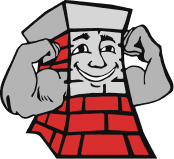A Brief History of the Chimney Sweep
Chimney Sweeps Have Been Around For A Long Time
by Dave Lamb – dave@mychimneys.com
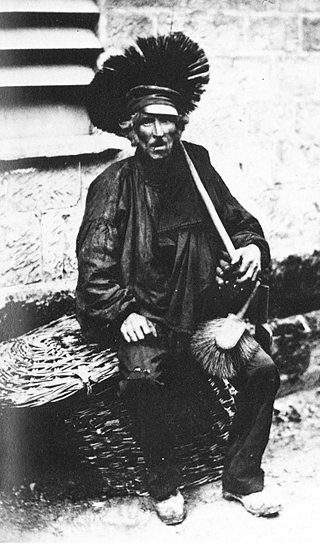 The job of a chimney sweep hasn’t been filled with fun and dancing as you might think from seeing Mary Poppins! The early sweeps had a tough and dirty job going from chimney to chimney, many times moving from roof to roof along the city row houses.
The job of a chimney sweep hasn’t been filled with fun and dancing as you might think from seeing Mary Poppins! The early sweeps had a tough and dirty job going from chimney to chimney, many times moving from roof to roof along the city row houses.
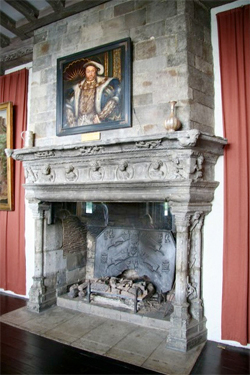
16th Century Fireplaces were found predominantly in castles and large estate homes of the very wealthy. This example is from Leeds Castle in Kent, England
Fireplaces actually date back to the early Romans. They may have been the first to discover the benefits of building a fireplace and chimney into homes for indoor cooking and heating, but it wasn’t until 16th century England that the trend of fireplaces and chimneys really caught on. First, the luxury was only found in the estate homes of the very rich or in the castles of the ruling class. The trend quickly grew and it wasn’t long before people requested fireplaces in each room of their home. In the 17th century in England, along with all of the new fireplaces came a hearth tax, based on the size of the house and the number of chimneys the house had. To lessen the financial burden of these additions, builders would connect the flues of new fireplaces with those of an existing chimney, creating a complex maze of pitch black narrow tunnels inside the home.
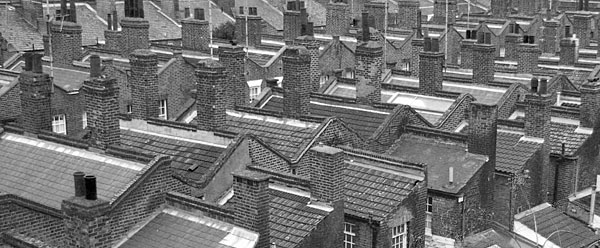
In London, rows of homes with chimneys kept chimney sweeps working along the skyline from roof to roof.
Also around this time, the use of coal in fireplaces to replace wood became increasingly popular. As a result of this change in fuel source, the need for cleaning became more apparent. The burning of coal left large amounts of sticky soot deposits behind that had to be cleaned off regularly or else it would back up and fill the house with harmful fumes. 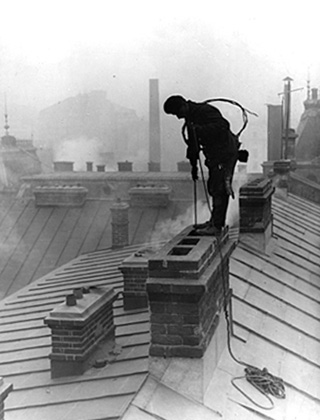 With the influx in coal use, regular chimney sweep visits became necessary and chimney sweeps became known for bringing clean and fresh air back to the home. This resulted in chimney sweeps being associated with good hearth and good health. At this point the profession of the chimney grew rapidly.
With the influx in coal use, regular chimney sweep visits became necessary and chimney sweeps became known for bringing clean and fresh air back to the home. This resulted in chimney sweeps being associated with good hearth and good health. At this point the profession of the chimney grew rapidly.
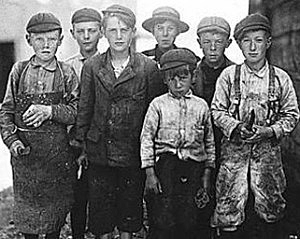 The task of cleaning the inside of the soot-filled chimney flues was a difficult job due to the narrow size of the flues. For this reason, it was left to poor orphan boys picked up by the chimney master or children sold by their parents into the trade. The children worked as indentured servants for their master, in exchange for a home and food and water. The master taught them the trade, and the children climbed into the chimneys to scrape off the coal deposits and clean the inside of the chimney flues. The conditions were harsh and the work was hard. Children were often scared to climb into those narrow passageways, so to give them a little extra encouragement, it was common practice for the masters to light a small fire under the child to get him to climb up the interior walls, hence the start of the expression, “to light a fire under you”.
The task of cleaning the inside of the soot-filled chimney flues was a difficult job due to the narrow size of the flues. For this reason, it was left to poor orphan boys picked up by the chimney master or children sold by their parents into the trade. The children worked as indentured servants for their master, in exchange for a home and food and water. The master taught them the trade, and the children climbed into the chimneys to scrape off the coal deposits and clean the inside of the chimney flues. The conditions were harsh and the work was hard. Children were often scared to climb into those narrow passageways, so to give them a little extra encouragement, it was common practice for the masters to light a small fire under the child to get him to climb up the interior walls, hence the start of the expression, “to light a fire under you”. 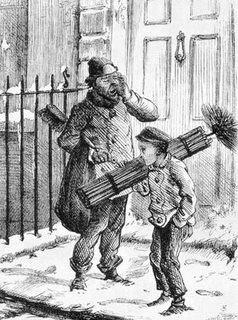 William Blake, an English poet, illustrates the difficult life of a chimney sweep boy in his poem, “The Chimney Sweeper”. The life of a ‘climbing boy’ was not just undesirable but dangerous as well. It was not uncommon for a child to suffocate from soot inhalation or take a fatal fall from the inside of a chimney. And unfortunately, if these boys were to survive the everyday perils of the job, cancer often developed due to the constant exposure to soot and grime.
William Blake, an English poet, illustrates the difficult life of a chimney sweep boy in his poem, “The Chimney Sweeper”. The life of a ‘climbing boy’ was not just undesirable but dangerous as well. It was not uncommon for a child to suffocate from soot inhalation or take a fatal fall from the inside of a chimney. And unfortunately, if these boys were to survive the everyday perils of the job, cancer often developed due to the constant exposure to soot and grime.
Finally, in 1864, Parliament passed “Act for the Regulation of Chimney Sweepers” and the boys were no longer used to climb up and down the chimneys to keep them clean. Instead, various cleaning devices were invented to aid the chimney sweep from one end of the chimney. In the 18th century, a man named Joseph Glass is widely accredited with the invention of chimney cleaning equipment that is still used today. His invention was a set of canes and brushes that could be used from the fireplace to clean all the way up the chimney. Another method of chimney cleaning invented around this same time used a heavy lead or iron ball and rope system used to clean the chimney from the top all the way down to the fireplace. More modern variations of both of these inventions are still used today.
In recent years, the change in fuel type has mandated a revision to the cleaning techniques used. In the 1960s, gas and electricity have replaced coal in fireplaces and the use of fireplaces as the main heating source for homes has declined. In the 1970s though, when the price of fossil fuels rose drastically, people went back to cutting and burning their own wood in fireplaces. This switch after years of non use proved to be a dangerous one if the proper provisions were not taken care of beforehand. When people used fireplaces that had been left unused for a long period of time without proper cleaning and care, house fires and carbon monoxide poisonings from clogged chimneys became commonplace. Presently with the comeback of the popularity of the functioning fireplace, the role of the profession of the chimney sweep has become increasingly important. This archaic profession is still growing today.
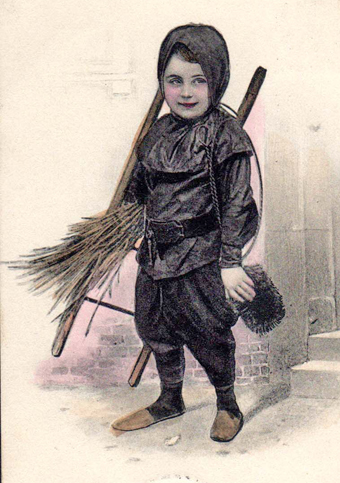
Imagery from 1904 postcard shows a "cheery" child chimney sweep, unfortunately the reality was not quite so picture perfect.
Although the life of the early chimney sweeps including children has often been dramatized and romanticized as being cheery and fun in stories, movies and artwork, the reality was quite different and the sweep’s life many times was one of toil and hardship.
One of the most famous literary works about Chimney Sweeps is William Blake’s poem, “The Chimney Sweeper”.
The modern day chimney sweep has come a long way from sending children up the chimney with a scrubber brush. Today, chimney sweeps do more than simply clean a chimney: they diagnose and service problems, repair all types of chimneys and install fireplaces and hearths. Professional chimney sweeps are educated in the codes and science behind chimneys and fireplaces.
Today, the chimney sweep is a well respected professional that helps to provide homeowners and businesses to maintain safe operation of heating systems, fireplaces, stoves, flues and chimneys of all kinds. Organizations like the and the NCSG hold members to very high ethical and educational standards of performance as well.


